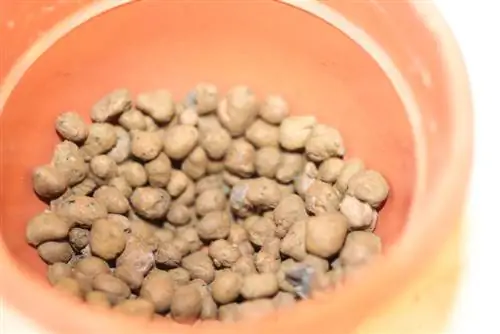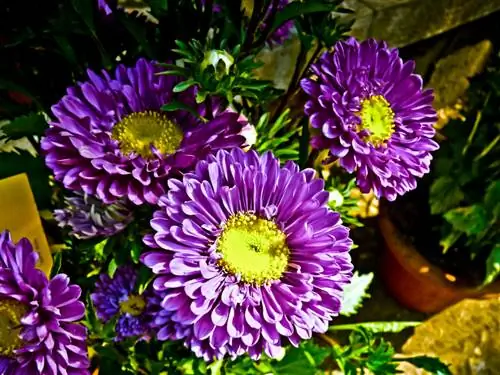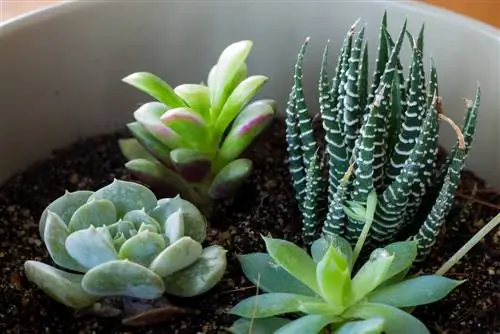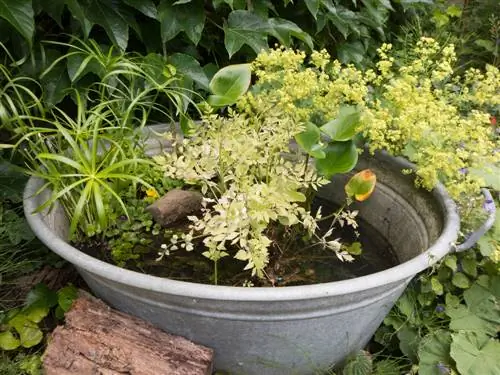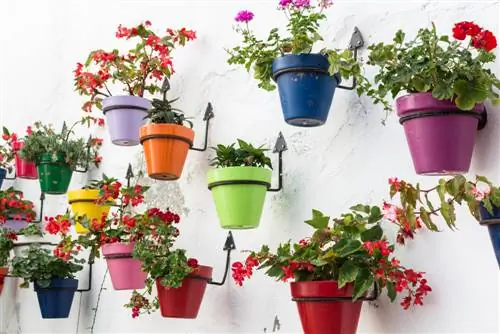- Author admin [email protected].
- Public 2023-12-16 16:46.
- Last modified 2025-01-23 11:22.
Many plants cannot tolerate waterlogging. Potted plants in particular are at risk because the water in the pot cannot drain away naturally. However, many plant pots are too good to drill a hole in. On this page you can read about the alternatives to the usual drainage.
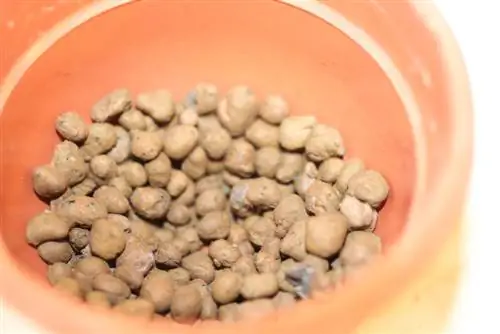
How do you plant in planters without holes?
To plant pots without holes, use expanded clay as a drainage layer: Fill 1-12 cm of expanded clay into the pot, followed by the potting soil. This is ideal indoors, but we also recommend a drainage hole outdoors in case of heavy rain.
Expanded clay as alternative drainage
What is expanded clay?
Expanded clay consists of low-lime clay, into which manufacturers mix organic material. During production, the useful bucket filling goes through the following processes:
- shredding
- Cleaning
- Homogenization
- Heating to 1200°C in a rotating oven
In the end, red-brown, bloated balls are created that are one hundred percent germ-free and contain only mineral substances. This results in the following advantages:
- no chemical ingredients
- biologically neutral
- optimal drainage for plant pots
- resistant to fungi and pest infestation
- durable
- air and water permeable
How to use expanded clay?
Always fill expanded clay (€19.00 on Amazon) as the bottom layer in your plant pot. Layer the potting soil on top. You should adjust the height of the expanded clay layer to the volume of your bucket. The following values apply:
- Small plant pots and balcony boxes: about 1 cm
- medium-sized planters: 5 to 12 cm
- high, slim plant pots: a layer of gravel (alternatively an insert) under the expanded clay to increase stability, otherwise also 5 to 12 cm
How does expanded clay prevent waterlogging?
With constant watering, conventional potting soil becomes compacted over time so that the water can no longer drain away. Expanded clay, on the other hand, absorbs the water and does not compact due to its airy structure with numerous cavities.
Plant pot without drainage hole
However, expanded clay cannot always be used as drainage. Whether the alternative is suitable depends on the location.
Indoor planters
Expanded clay is ideal for drainage here, as models for indoor use usually intentionally do not have a drainage hole. This means you don't need a coaster, but can place the bucket directly on the windowsill.
Outdoor planters
Outdoor planters are exposed to heavy rainfall on some days. Even expanded clay cannot absorb heavy rain. These models require an additional hole.

